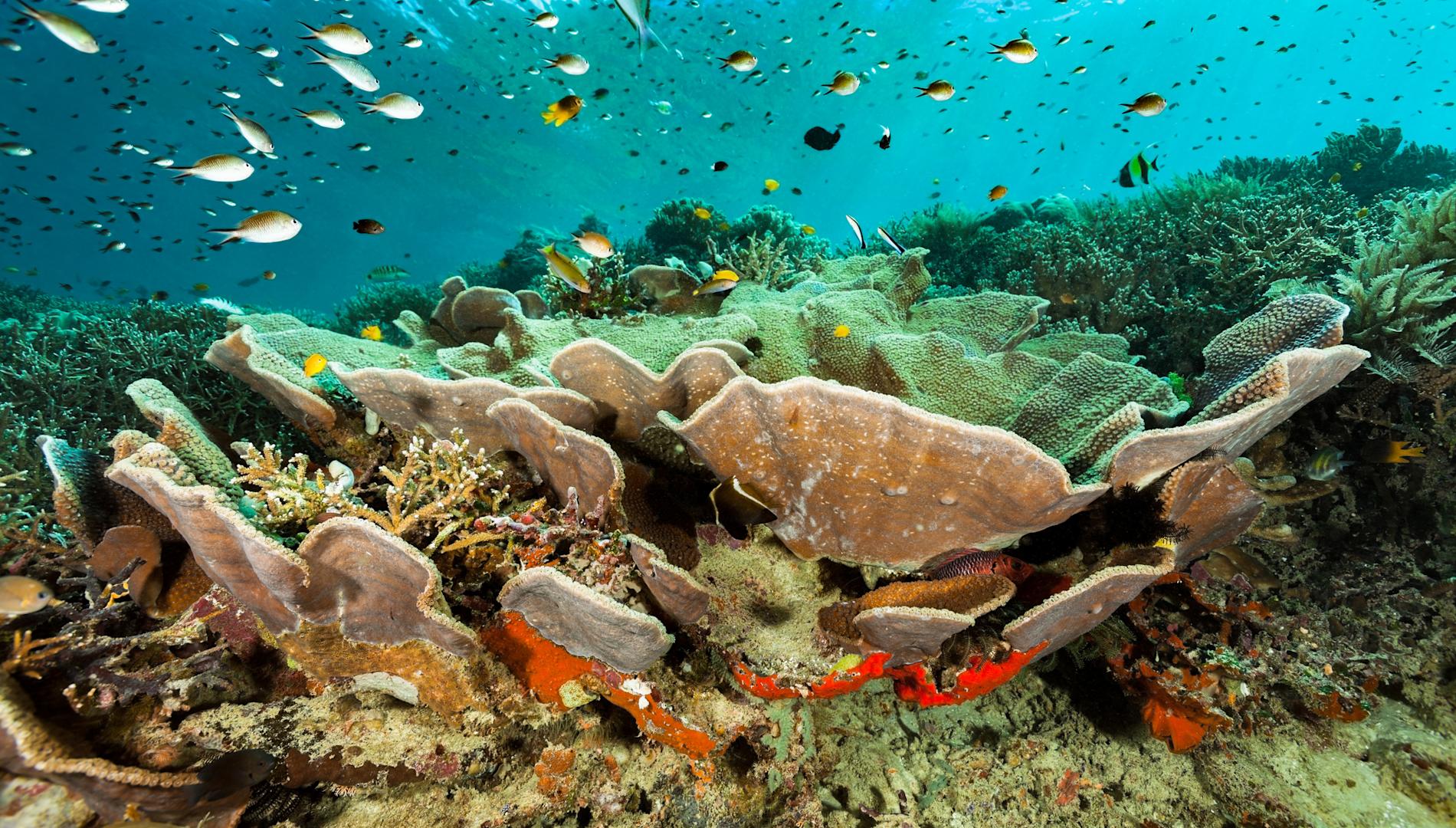Microbial ‘cities’: How ancient microbes shaped Earth – and may help save it
When it comes to early life on Earth, one thing is certain – it must have been microscopic. The earliest evidence for this comes from Hamelin Pool in Western Australia, where fossil rock-like structures formed by ancient microbial communities named microbialites have been dated at 3.5 billion years old.
Compare this with human life – we’ve existed for only about 300,000 years, a mere 0.007% of Earth’s age.
Like us, microbes modify our planet, and they’ve been doing so profoundly for billions of years. In fact, microbes oxygenated our planet in the first place, allowing our existence. This happened about 2.8 to 3.5 billion years ago when cyanobacteria began using water instead of chemical compounds to obtain electrons in photosynthesis, producing oxygen as a byproduct.
This innovation, known as oxygenic photosynthesis, released large amounts of oxygen into the atmosphere, changing its composition gradually to present values.
This process not only provides oxygen for myriad organisms to breathe, but also promotes the formation of the ozone layer, which protects most life forms from harmful ultraviolet radiation.
What we found in Victoria
Our latest research into communities of microbialites was based at West Basin Lake near Lake Corangamite, in western Victoria. This project was led by Monash University, the University of Melbourne and University College London, and is now published in the ISME Journal.
What’s new about our findings is the amount of biomass produced by them using energy sources other than light. That means these microbes, unlike most plants and algae, don’t obtain energy by sunlight alone.
We think these ecosystems have been places where microbes came up with new ways to survive and make energy, helping shape the course of life on Earth.
Read more: How do ecosystems collapse: Our study shows evolution plays a role
We studied more than 300 microbial species from forming microbialites – deciphering the functions encrypted in their genomes – and through lab experiments we found these microbes work together in highly efficient and complex ways.
Their impressive teamwork allows them to keep the system productive around the clock, even at night when photosynthesis stops. They can tap into energy from chemicals in their surroundings such as hydrogen, iron, ammonia and sulphur, allowing them to thrive even in complete darkness.
Our collaborator and senior author, Dr Harry McClelland, from the University College London, says the purpose of the research was to find “generalisable rules” governing functions within these systems.
He says one rule appears to be that the chemical potential energy that results from diffusion between neighbouring microenvironments can drive biomass production at significant rates, recapturing carbon dioxide lost through respiration and maximizing productivity.
Before plants evolved and diversified, cyanobacteria were undoubtedly the dominant drivers of biological productivity.

Thriving without light
We’re able to now show that much biological productivity was also generated by microbes using chemical energy sources instead of light, through a process named chemosynthesis.
Cyanobacteria are just one of many organisms living in microbialite ecosystems, but microbialites are among the most diverse and rich ecosystems ever characterised by scientists – a real microbial melting pot.
About half of the microbes inhabiting microbialites use chemical energy sources such as hydrogen, hydrogen sulphide, and carbon monoxide. But – remarkably – many of these sources are generated when other microbes use cyanobacteria byproducts.
Microbial cities
Chemosynthetic bacteria recycle these byproducts and fix carbon dioxide, which contributes to significant levels of primary production alongside photosynthesis. In effect, these ecosystems are microbial “cities” where organisms with different metabolic capabilities co-exist, cooperate, and sometimes compete.
Much like the human urbanisation booms of the 18th and 19th centuries, these microbial communities likely formed and thrived due to the advantages of proximity to each other, access to shared resources, and opportunities for cooperation, which increased resilience.
In these settings, microbes had the chance to invent ways to survive. That’s why we think that these complex microbial communities have been hotspots of metabolic innovations.
These dynamic cooperations were so successful that the complex microbial communities dominated Earth for a very long time, nearly three billion years, until about half a billion years ago, when grazing animals began to evolve, substantially reducing their abundance on most of the planet.
One of the key secrets to the success of these microbial cooperations is the ability of the communities to utilise most elements such as sulphur, nitrogen and carbon, including greenhouse gases such as carbon dioxide, methane and nitrous oxide present in their environment in an extremely efficient way around the clock.

Solutions for a warming world
We think our findings could help inform new waste gas solutions, because many of the microbes we find inside microbialites are very efficient at consuming potent greenhouse gases. Tapping into these systems could provide new microbial solutions to absorb industrial gaseous waste and offset greenhouse gases through carbon capture and bioenergy production.
Some innovative microbial bioenergy companies are already using microbes called methanogens to convert carbon dioxide and hydrogen into storable methane. Others use microbes called methanotrophs to convert methane into food for pets.
These are important steps toward a greener future, but in the context of the current climate crisis, embracing microbial strategies for resource recovery and byproduct recycling could help build a more sustainable future.








